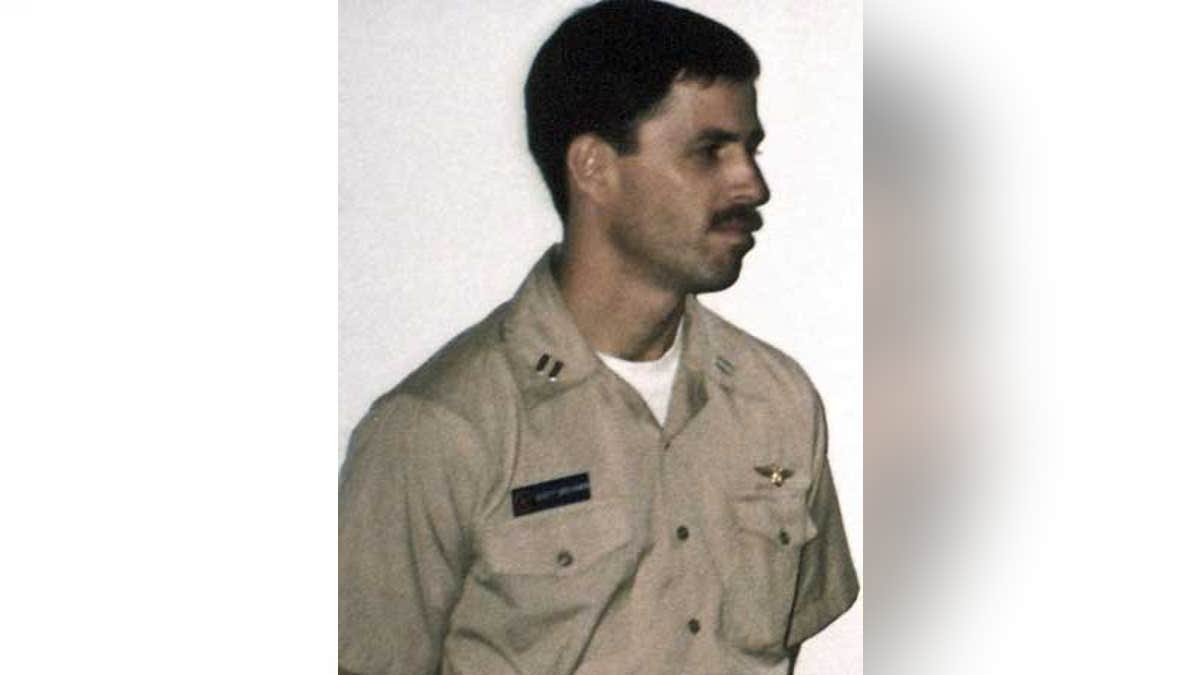
June 18, 1990: Michael 'Scott' Speicher aboard the carrier USS Saratoga when he was promoted to Lt. Commander. (AP)
WASHINGTON – The military says Capt. Michael "Scott" Speicher died when his fighter jet was shot down over Iraq in the 1991 Gulf War and was never captured or tortured.
But Speicher's family is unconvinced.
The Navy pilot's remains were identified earlier this year under about 18 inches of sand in the Iraqi desert.
In an exclusive interview with The Associated Press, the chief of POW/MIA analysis at the Defense Intelligence Agency describes a series of twists and the duplicity of Saddam Hussein's government led to a number of false leads and rumors about Speicher's survival.
Thomas Brown worked on Speicher's case for 15 years. He says while Speicher status was changed from killed in action to missing 10 years after the crash and intelligence suggested Iraq was either holding him prisoner or hiding his remains.
But Brown says in the end, it turned out that Saddam's government had told the truth about the crash site in Anbar province at the start.
The military has declared the Speicher case closed, but for his family, the ending is too neat. One family member sees it as an effort to whitewash the Pentagon's failure to launch a search and rescue mission in 1991.
Defense officials declared Speicher killed in action hours after his plane was shot down over west-central Iraq. Then-Defense Secretary Dick Cheney announced on television that Speicher was the first casualty of the Gulf War.
Ten years after the crash, the Navy changed Speicher's status to missing in action, citing an absence of evidence that Speicher had died. In October 2002, the Navy switched his status to "missing/captured," although it has never said what evidence it had that he may have been in captivity.
Over the years, critics contended the Navy had not done enough, particularly right after the crash, to search for the 33-year-old pilot.
The military recovered bones and multiple skeletal fragments, and Speicher was identified by matching a jawbone and dental records.
The Armed Forces Institute of Pathology in Rockville, Md., is running DNA tests on the remains and comparing them with DNA reference samples from family members.
